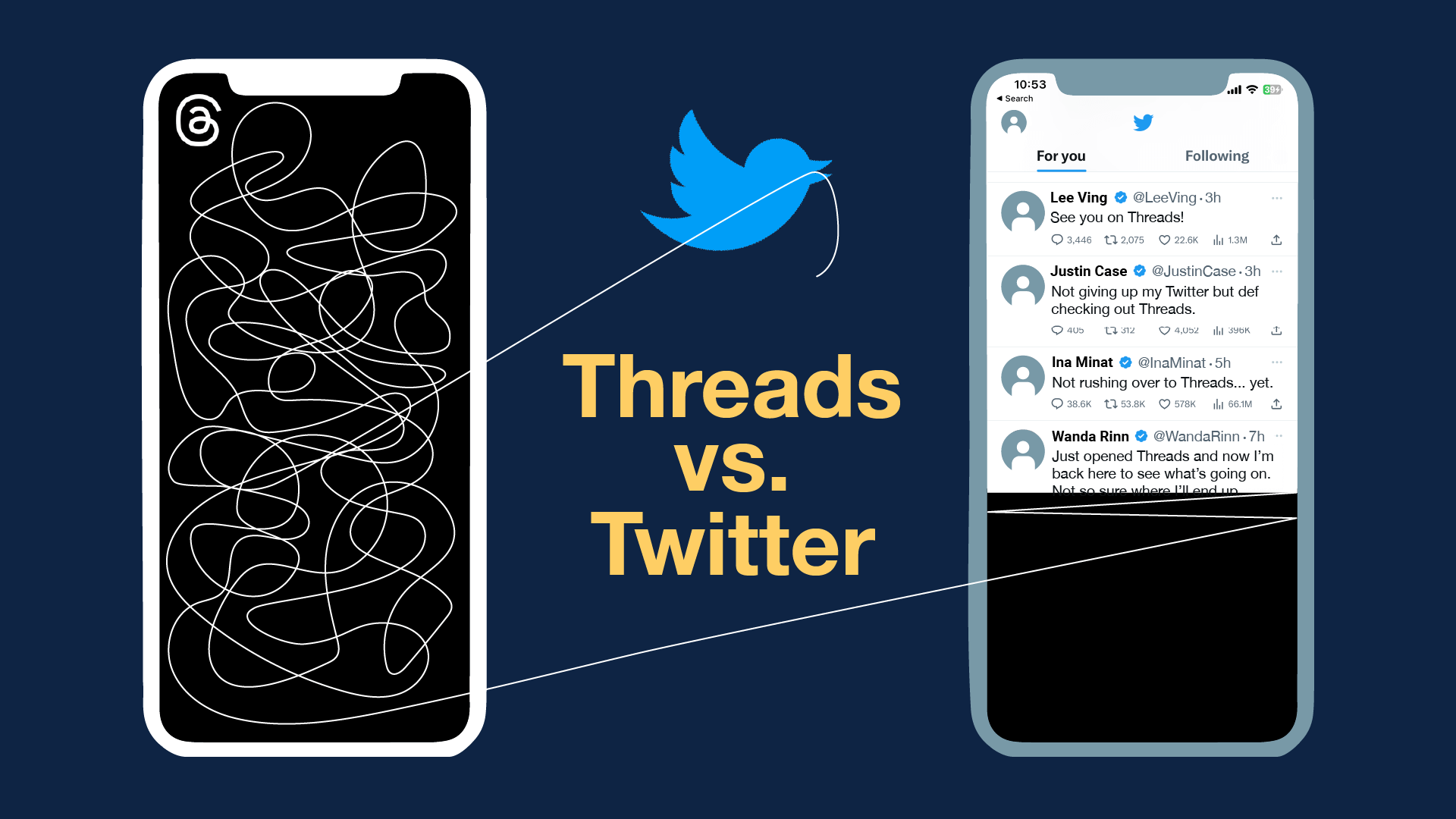
Threads vs. Twitter: Weaving a brand narrative

Move over, Twitter – there’s a new text-based conversation app in town. And like Facebook, Instagram, and WhatsApp, it’s made by Meta.
Launched on July 5th, Threads is the latest platform for fast responses and cultural commentary, and everyone from Oprah to Netflix is trying out the new service. With 10 million signups in only seven hours and 30 million signups in just one day, the platform is moving fast and growing faster.
For years, Twitter occupied a social media niche where companies, brands, celebrities, and everyday users could all engage in daily online conversation. From sports and entertainment to world events and culture, there was no end to the number of topics. But since Elon Musk’s acquisition of the platform and its subsequent changes, some advertisers are looking for a new option. And Threads is poised to capitalize on that opportunity.
While other microblogging platforms like Spill have emerged in Twitter’s wake, Threads has one major advantage: Instagram. Because Threads is linked to the photo sharing app, usernames are the same across both platforms, seamlessly connecting with users’ Instagram networks. This makes it easy for brands to migrate from Instagram to Threads with their existing audience in tow, boosting uptake through pure convenience. And because the layout and mechanics are so reminiscent of Twitter, the learning curve is almost nonexistent.
But what makes Threads more than just an aspiring Twitter?
1. Character Limit
While unverified Twitter users have a maximum of 280 characters, paid subscribers can increase their character limit to a whopping 25,000 characters for a monthly fee of $8. But on Threads, everyone has a 500-character count limit, allowing users to compose concise yet meaningful messages.
2. Video Length
On Twitter, users without the coveted blue badge can only post videos up to two minutes and 20 seconds long, limiting their video content duration. However, Threads users, including unverified ones, can post videos of up to five minutes, providing more flexibility for sharing visual content.
3. Content Discovery
Threads is still in its infancy, and users can currently only explore by scrolling through the home feed, which displays posts from the accounts they follow. Hashtags and desktop integrations are not yet available.
As a more mature platform, Twitter offers a homepage that showcases trending topics and other personalized recommendations to help users discover diverse content.
4. Draft Saving
As of now, Threads does not provide an option to save drafts of posts, which could be an obstacle for users who frequently plan and refine their content. Twitter offers the convenience of saving drafts, allowing users to fine-tune their tweets before sharing.
5. Starting Threads
A simple post on Threads is straightforward, but to initiate a Thread, users need to hit the enter key three times. This allows them to create connected and organized conversations. On Twitter, starting a thread is as simple as clicking on the plus button to add tweets sequentially.
6. Ads
In its initial launch, Threads is ad-free, aiming to generate enthusiasm and attract users with a more streamlined experience. However, this could change in the future, especially if Threads hopes to scoop up Twitter’s lost ad revenue.
So while Threads is a definite newcomer with room to grow, Meta CEO Mark Zuckerberg is confident Meta can take the app to the next level. “It'll take some time, but I think there should be a public conversations app with 1 billion+ people on it,” Zuckerberg wrote in a Threads post. “Twitter has had the opportunity to do this but hasn't nailed it. Hopefully we will.”
Before Threads can go international, Meta will have to contend with the EU’s stricter privacy regulations. The new platform has raised concerns due to the extensive data it gathers from users. As per iOS's required disclosures, Threads may collect highly sensitive information such as financial and health data, precise location details, browsing history, contacts, search records, and other private data. This data is used to create detailed profiles of users' online activities, enabling precise behavioral advertising through microtargeting techniques.
So what’s next for the fledgling app? Will it really be bigger than Twitter? Will Elon and Zuck really follow through on that cage fight? New platforms lead to new questions, and while we can’t predict the future, we can navigate it together. Contact the Zehnder Team today at beyond@z-comm.com to discover how we can help your business jump on board.






